Rebuilding
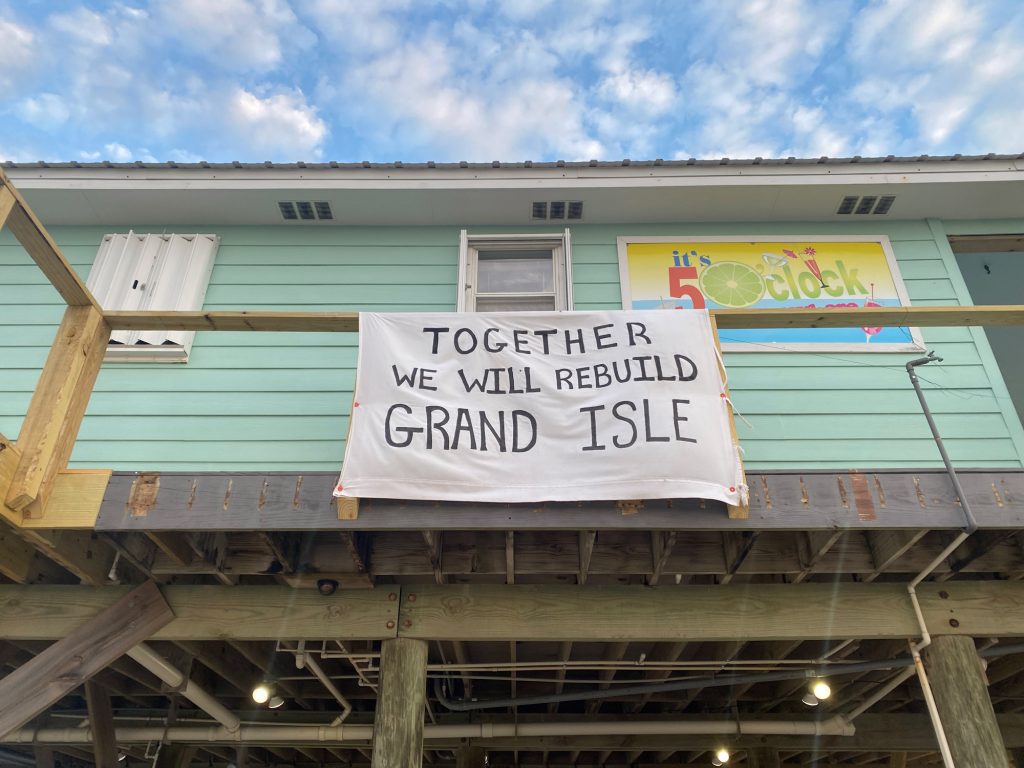
by Karly Taranto, staff writer Grand Isle is home to about 1,460 people, many of whom are still recovering from Hurricane Ida’s devastation. It is also a second home for many camp owners, some of whom say they are debating whether to rebuild or demolish. “We had about $80,000 in wind insurance, but rebuilding would cost over $250,000 with the cost of materials,” says camp owner Paul Hymel. Hymel says he co-owned the camp with his brother, two uncles and grandmother. Following the hurricane, only the foundation stood in the place of what he says was once a second home for his family. “My uncles and grandmother do not have much interest or need to have a camp there, so that leaves my brother and I to do anything with it,” says Hymel. “We just don’t have the time to do the construction and, frankly, do not have the know-how or people who could help us; not mentioning the cost it would take us to rebuild.” The Federal Emergency Agency (FEMA) has strict requirements regarding the rebuilding process. A new policy requires coastal structures to be built 16 feet above the ground to protect them from wave and flood damage during natural disasters. The homes that did not meet the required elevation received less insurance money for the property destruction from Hurricane Ida. The Hymel family’s camp is a 1950’s home that was elevated to 10 feet and has not been remodeled. Because of increased insurance costs due to their camp being below elevation requirements, the only insurance the family could afford was wind insurance. However, they did not receive enough money to consider rebuilding.Following the aftermath of Hurricane Ida, new building codes are being implemented. Height requirements and wind-proof building materials are now required, and insurance costs will increase for homeowners on the island. Insurance adjusters are assessing homes to determine if rebuilding or repairing will be required for each home. If adjusters deem that a house is over 50 percent damaged, owners will be required to demolish. “Because of the extent of damage, building codes becoming more stringent and cost of materials rising, I think you will see a lot more selling rather than rebuilding,” says insurance agent Chris Hogan. “The building codes will require more money, which will make it harder for people who own camps to rebuild on the island, especially if starting from scratch.” “Because of the extent of damage, building codes becoming more stringent and cost of materials rising, I think you will see a lot more selling rather than rebuilding.”— Chris Hogan, insurance agent Though organizations like the Bayou Community Foundation have raised over $4,000,000 to contribute to rebuilding and recovery, the significant increase in general building costs will leave an abundance of empty lots in Grand Isle. Hymel says many camp owners who were left with nothing have discussed putting awnings on their property and bringing campers to the island instead of rebuilding. “Options for us would be purchasing an older camp or rebuilding; either way it is extremely expensive or not worth it due to the risks of natural disasters in the future,” says Hymel. “Lots of memories were made on the island in our camp that no longer exists.” Home completely destroyed in Grand Isle following Hurricane Ida. Grand Isle home damaged from Hurricane Ida. Paul Hymel and his daughter fishing on the dock with their family camp in the background. Paul Hymel’s land where their camp used to be, nothing was left except the pilings featured. Grand Isle home destroyed from Hurricane Ida. The Road to Rebuilding
Aid to Help Island Recovery
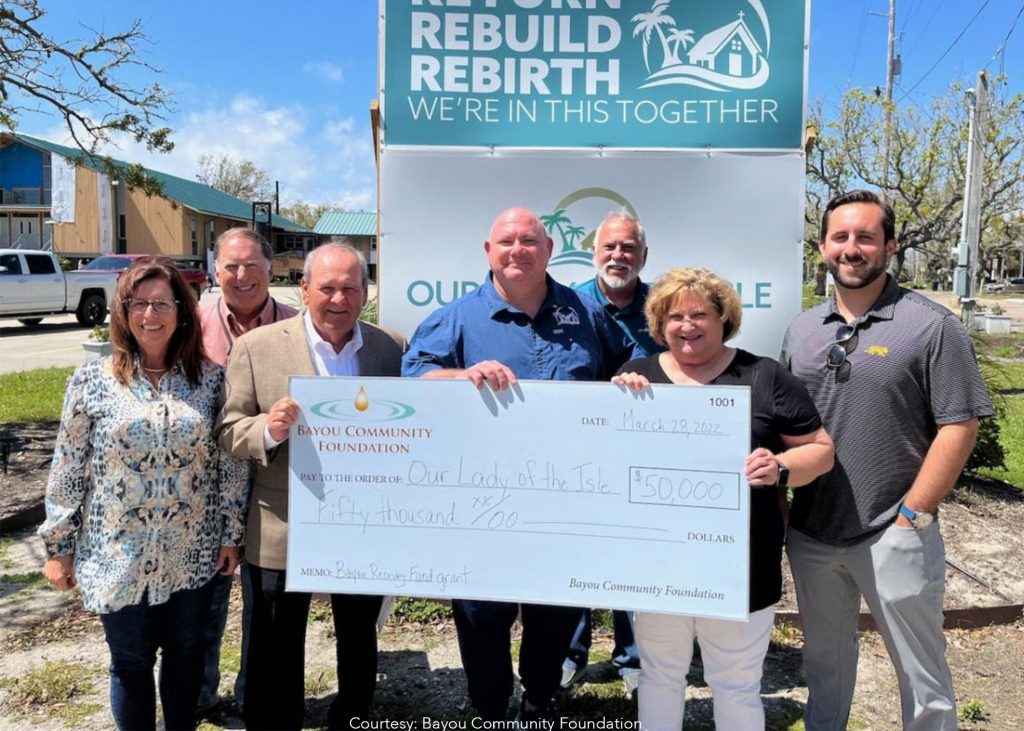
By Karly Taranto, staff writer The Recovery from Hurricane Ida’s devastation has been ongoing since the day after landfall for the Islanders. There has been an abundance of helping hands from different groups across the state. The Bayou Community Foundation (BCF) began awarding assistance grants in October 2021, so far totaling $4,365,918 in aid relief. Jennifer Armond, coordinator of the Bayou Community Foundation (BCF), says grants will continue to be awarded as they become available. Grants through the BCF are not limited to rebuilding purposes only. They also provide hot meals, supplies, and financial assistance to help families in need. There is a lack of housing on the Island even though it has been 7 months since the hurricane. Many families are relocated, but slowly returning to Grand Isle. “We are working on a larger housing effort for Grand Isle right now,” Armond says. Physical support like this was needed to get Grand Isle back up and running, but assistance for families was also necessary during what was, to many, an emotional time. Families lost jobs and income to provide for themselves and their families. “It was amazing to see the generosity of other home and camp owners on the island after everything was said and done, it was a very emotional experience.” — Michelle Wool, camp owner Janet Scardino, Mayor’s Assistant in Grand Isle, says The Benson Charitable Foundation reached out to us in regards to bringing toys here for the kids around Christmas time. The Benson Foundation is a charitable foundation from New Orleans, founded by Tom and Gayle Benson. “They came in with truck loads of toys for the kids here; we put out the toys on tables for the kids to choose from and we still had crates of toys left over, it was amazing,” says Scardino. “There were toys ranging from wireless headphones for the older kids to nice backpacks from Disney World.” The town of Grand Isle experienced additional help that played a significant role for them getting back onto the island following the devastation from Hurricane Ida. Family and friends worked together to pick up debris at camps and houses. They brought water and food to people who needed it. “As we cleaned what was left of our camp shortly after the hurricane, we had at least 10 to 12 people stop and offer a hand in our cleaning process; along with anything else we could possibly need,” says camp owner Michelle Wool. Alternative to money, manual labor assistance was provided for demolitions. Many people from other areas of Louisiana traveled to the island to offer help in cleaning up, along with helping to salvage what was able to be saved. The National Guard helped clear roads and debris from the Island immediately following the storm. Other organizations such as Catholic Charities, United Houma Nation, and the Cajun Navy assisted Grand Isle, as well. “I believe we partner with organizations to make a difference in our local community, but also to make a bigger impact across South Louisiana,” says Sherry Rhodes with Catholic Charities. The people of Grand Isle stay hopeful that assistance will continue to come as they recover from the natural disaster. Wool says, “It was amazing to see the generosity of other home and camp owners on the island after everything was said and done, it was a very emotional experience.” https://youtu.be/UEXrVy7tcRI
Insurance Challenges
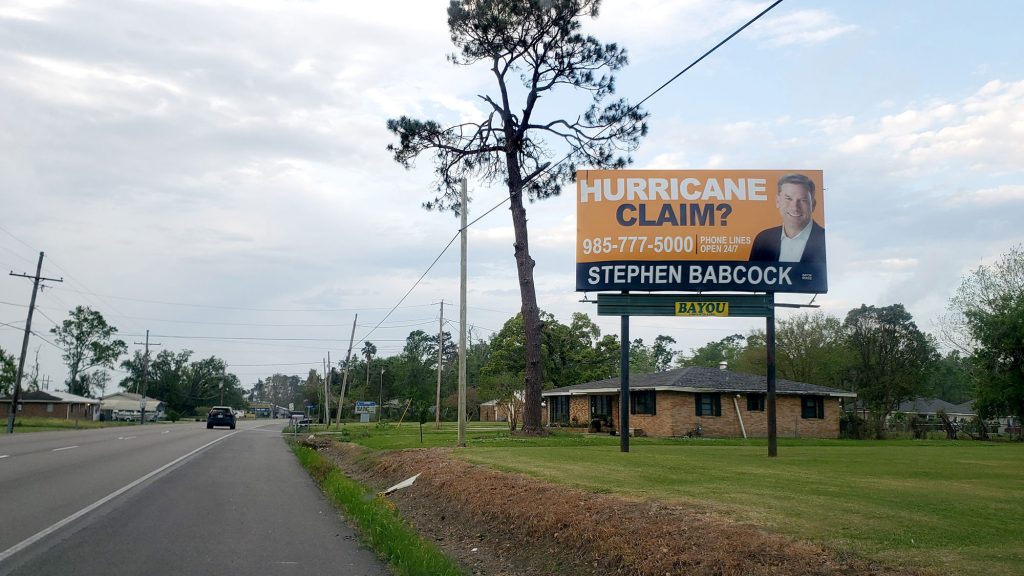
By Jonathan Eastwood, features editor Many Grand Isle residents that survived Hurricane Ida are now faced with rebuilding damaged houses and camps. But, for some, insurance is not paying enough to cover the cost of damages, leading them to take legal action. “I used to live at our camp, and it was a beautiful camp,” says Dane Baker, whose family camp on Grand Isle was severely damaged in the storm. Baker said his family’s property received upwards of $40,000 in damages, but insurance was only willing to pay $2,000. He says because of this, the camp will have to be demolished. “The insurance is doing us dirty,” Baker says. “We’re probably gonna have to knock down our camp completely because we’re not gonna have the money to fix it. It really makes me sad – it makes me so sad to be treated this way by the insurance company and have to just destroy the thing I love so much.” “The insurance is doing us dirty. It makes me so sad to be treated this way by the insurance company and have to just destroy the thing I love so much.” — Dane Baker, camp owner Michael Johnson, a public building consultant, says he inspected a home in Grand Isle that sustained enough damage to shift the building on its foundation. However, its owners still received insurance estimates lower than necessary to fix the damage. “This particular one, I’ve already written the estimate on it,” says Johnson. “My estimate was three times more than her [insurance] estimate.” Some are taking legal action against their insurance companies. Attorneys are reaching out to help the public with their claims. At a public meeting for those curious about moving forward with claims against their insurance companies, attorney Michael Moore presented a scenario that may take place if legal action is not taken. “It’s been 193 days since Hurricane Ida hit – we shouldn’t be having this conversation right now,” Moore says. “But the scarier number is that it’s been 560 days since [Hurricanes] Laura and Delta hit Lake Charles and it’s still nothing but blue tarps [on the roofs].” Attorney Beau Brooks says he heard stories of insurance companies refusing to contact their clients whose homes were in unlivable conditions. This is not only localized to Grand Isle, but much of South Louisiana, says Brooks. “It doesn’t matter if you’re in Grand Isle, if you’re in Cutoff, or if you’re in Larose – you’re just seeing a lot of people continuing to have problems with their insurance companies paying,” says Brooks. Baker’s grandmother recently began legal proceedings against the family’s wind insurance provider to seek the compensation she says they are owed. “There’s no reason why you pay a company for years and years, give them tens of thousands of dollars, and then they don’t wanna help you out at all,” Baker says. “That’s just plain wrong.”Some people with property on the island say they received adequate payment from the start and do not need to seek legal action, but they also acknowledge the trouble others currently face. “Some people did good, some people had to get lawyers,” says Donnie Camardelle, a Grand Isle camp owner. “There might be two out of 10 [that are] satisfied.” Hellickson Public Adjusting sign in Grand Isle Babcock billboard on Hwy-24 Baldone billboard Hwy-24 Legal meeting Attorney Beau Brooks’s meeting at Politz’s in Thibodaux. St. Martin-Bourque Billboard on Hwy-24
Island Industry
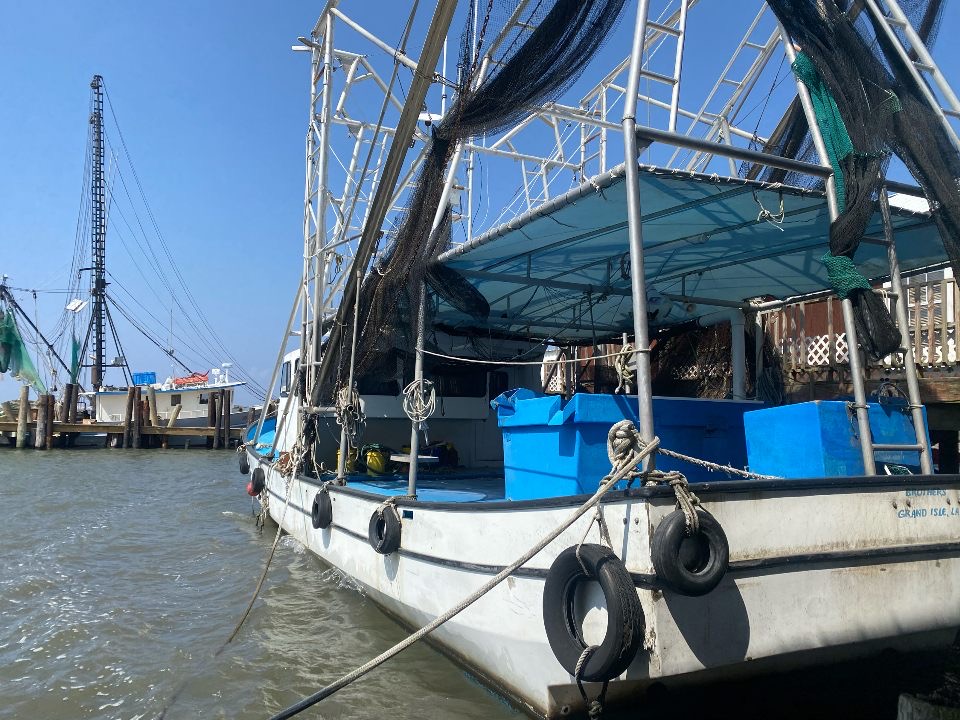
By Alaina Pitre, staff writer Grand Isle, Louisiana, is home to several industries including oil, seafood and fishing, tourism and several types of recreation like surfing and birding. Over time, natural and historical factors have caused significant shifts in these industries. Located on the Gulf of Mexico, fishing and seafood are two prominent industries on the island. Grand Isle is home to the oldest fishing tournament in the United States, The Grand Isle Tarpon Rodeo, established in 1928. “Commercial fishing is the livelihood of the town of Grand Isle,” says Weldon Danos, executive director of the Grand Isle Port Commission. “Commercial fishing is the livelihood of the town of Grand Isle.”— Weldon Danos, executive director of the Grand Isle Port Commission. These industries attract tourists, making Grand Isle a common vacation destination to South Louisianians. Grand Isle’s tourism scene was established in the early 19th century, and it was mostly visited by South Louisiana’s wealthy planters and New Orleans’ elite. In addition to economic shifts in Grand Isle’s industries, historical and environmental factors have made significant contributions to industry shifts. Some of the most impactful shifts are caused by erosion and hurricanes. Rickey Collins, owner of Jo-Bob’s Gas & Grill and longtime Grand Isle resident, says that he has seen significant industry shifts in his time on the island. “In the early eighties there was a massive oil field presence in Grand Isle,” Collins says. “It was a huge clientele for the island and now they’ve all left.” Collins says big oil companies like Exxon and Conoco had bases and installations on the island. He says it was a big business for Grand Isle, but island business has now transitioned primarily into tourism. According to Klaus Meyer-Arendt’s Annals of Tourism Research Volume: 12, Issue 3, Grand Isle’s industries can be divided into several developmental phases to define industry changes and shifts. The first stage started in the 1820s and lasted about 70 years when a railroad connection shortened the travel time from New Orleans to Grand Isle, making the island more accessible. A notable business of this time span was The Ocean View Hotel, a luxurious, multi-facility resort that was completely destroyed by a hurricane in 1983. The second stage, from 1893-1945, was geared more towards developing recreational activities. Not only was the Tarpon Rodeo born during this phase, but Highway 1 was also completed, allowing more automobile access onto the island. This period was also accompanied by more hurricane devastation, two world wars, and the Great Depression. Post-war development in the 1950s was heavily impacted by shoreline erosion and beach deterioration due to hurricanes. Despite erosion control measures, this decline in development continued into the 1960s.. Devastating hurricanes such as 1965’s Betsy, 1985’s Danny, Elena, and Juan, 2005’s Katrina, 2008’s Gustav, 2021’s Ida, and many more have remained a consistent threat to Grand Isle and the flow of its industries. As hurricanes continue to impact businesses as well as entire industries, Grand Isle residents feel the effects. “It gets old after a while – it becomes hard,” Collins says. “Rates go up, some businesses and residents don’t recover and leave, and things change every time.” Danos says the seafood and commercial fishing industry as a whole has lost around 1.2 billion dollars from Hurricane Ida’s impact. He says it will take years to fully recover from this loss. “I think the industry is very strong-willed, and they are willing to come back,” Danos says. “They haven’t given up.” Collins says the Grand Isle community is dedicated, even with its ever-changing culture. Collins says, “We won’t give up unless the day comes where the government gives up on us.” https://youtu.be/7p-NgPQFGSo
The People
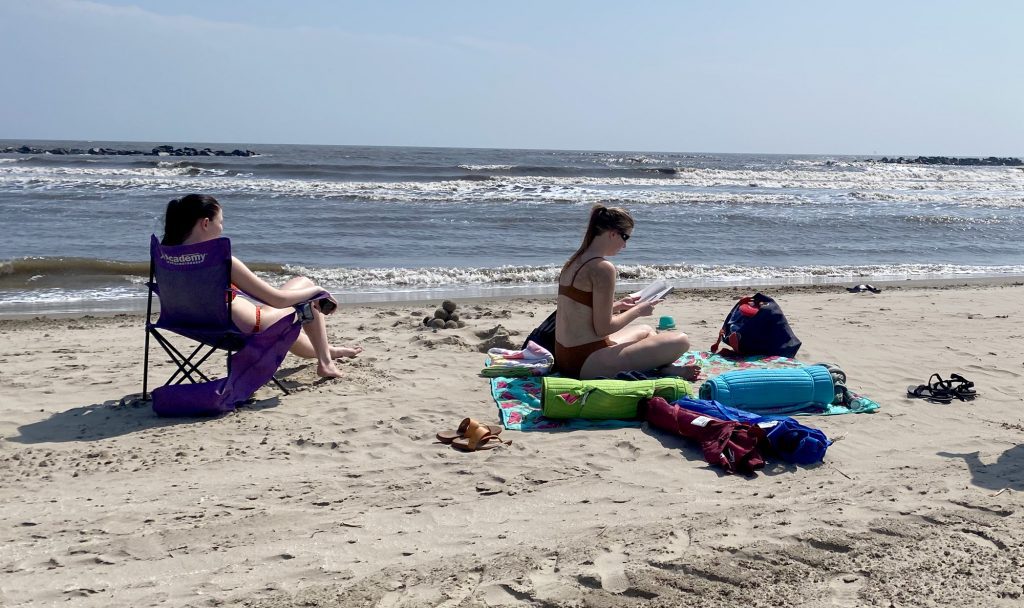
by Jonathan Eastwood, features editor When hearing about people from another area or culture, it can be easy to forget that they are regular, ordinary humans. The people of Grand Isle form a strong, close-knit community. They work, play, and live together on the island. The residents know each other and are friendly to visitors. “They’re very resilient – the entire community is resilient,” says Grand Isle School principal Christine Templet. “They’re very resilient – the entire community is resilient.” — Christine Templet, Grand Isle School principal Grand Isle is often frequented by vacationers – whether they are visiting for the first time or staying in their camp for the summer. Many camp owners grew up frequenting the island with their parents and other family members. Grand Isle is also a location for destination weddings. Not only does the island provide scenic beaches and warm weather, but many couples also have long-lasting ties to the island. Although the people of Grand Isle are currently working on recovering from major hurricane damage, they live one day at a time, simply working together and building relationships.
Island Recreation
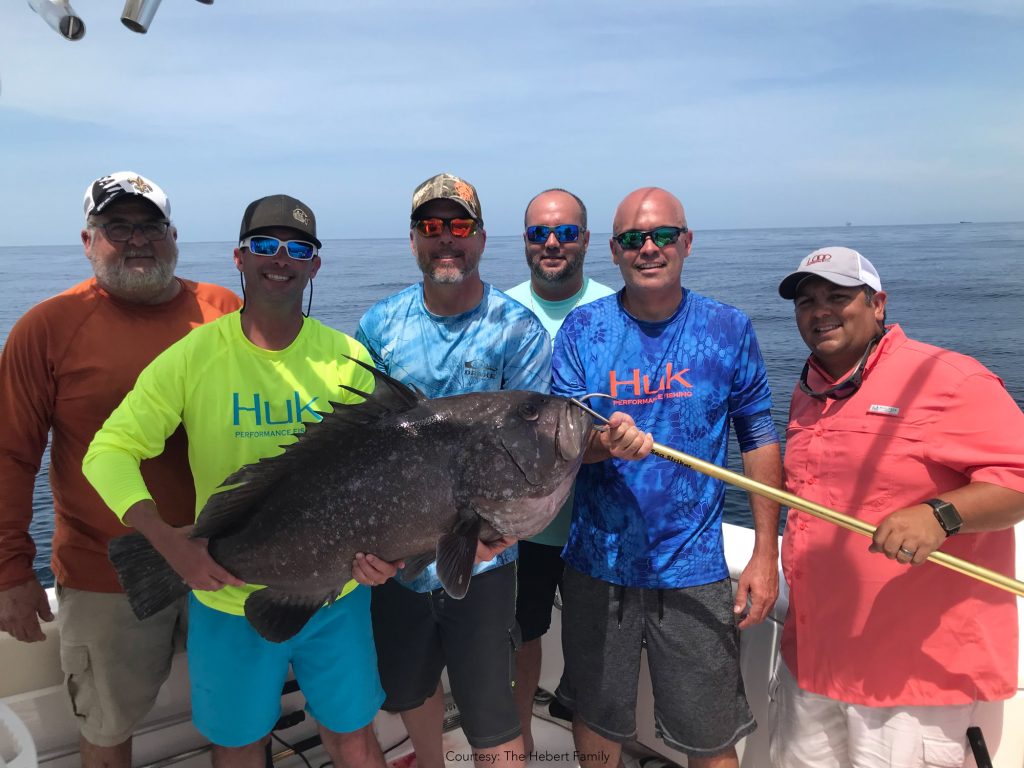
By Cayden Stump, staff writer Tournament fishing in Grand Isle draws people from all over the country. The island is even home to what one resident refers to as “the Superbowl of sport fishing” – the Louisiana Gulf Coast Billfish Classic. In Louisiana, fishing tournaments are often called rodeos. These range from small family-oriented events to large tournaments covered by national networks. No matter the size of the event, increasing tourism and giving back to the community are some of Grand Isle’s goals when hosting fishing tournaments. One major event that takes place every April is the Louisiana Gulf Coast Billfish Classic, which focuses on offshore fishing, whereas smaller events are typically fished in inshore waterways. This event is the first of 12 that take place along the Gulf and East coasts of the United States. “This is covered by CBS Sports Network, where they will actually be broadcasting it on TV,” says Lan Tivet, spokesperson for the Hurricane Hole, a popular marina and tourist destination in Grand Isle. “It’s gonna be known as the Superbowl of sports fishing. If you enter any of those 12 tournaments and you enter the sports championship, you can essentially win $1,000,000 worth of cryptocurrency.” According to Tivet, The Louisiana Gulf Coast Billfish Classic is referred to as the “Superbowl of Fishing” because there are two sides: the Gulf coast and the East Coast. They compete, and whoever has the most points at the end wins. The Billfish Classic is not the only tournament on Grand Isle. Dr. Lee Grafton of Thibodaux is an avid fisherman who regularly participates in rodeos. One of Grafton’s favorite rodeos to fish was started by a friend whose three-year-old son drowned in a swimming pool. “He always wore blue boots,” Grafton says. “So they started this Blue Boot Rodeo, and it’s all about safety and life jackets and saving lives and preventing drowning.” “He always wore blue boots, so they started this Blue Boot Rodeo, and it’s all about safety and life jackets and saving lives and preventing drowning.” — Dr. Lee Grafton “They do the rodeo and then they donate all the money towards throwable rings on the beach, and every kid gets a life jacket that signs up, so it’s really a neat rodeo that has gained a lot of popularity.” Family-oriented events like Blue Boot are meant to be informal and fun, and their aim is to help the community raise awareness and gain funds through charitable acts. Tournament fishing is not the only fishing that happens on Grand Isle. The island is also known for some great recreational fishing, says Ryan Perque, a resident of Thibodaux who owns a camp in Grand Isle. Perque says he goes to Grand Isle as often as he can. “Grand Isle is a special place for me and my family and my friends because there’s so many options there,” he says. From fishing to lying on the beach and having a few cold ones with friends and family, Perque says, “It is a special place to be and makes you want to keep on going back.” https://youtu.be/40iYVyhci4k 2022 grand isle Fishing Tournaments April 18 – 23 May 26 – 29 June 8 – 11 June 23 – 25 June 25 – 26 July 7 – 9 July 28 – 29 August 27 September 23 – 24 October 9 – 10
Our Lady of the Isle
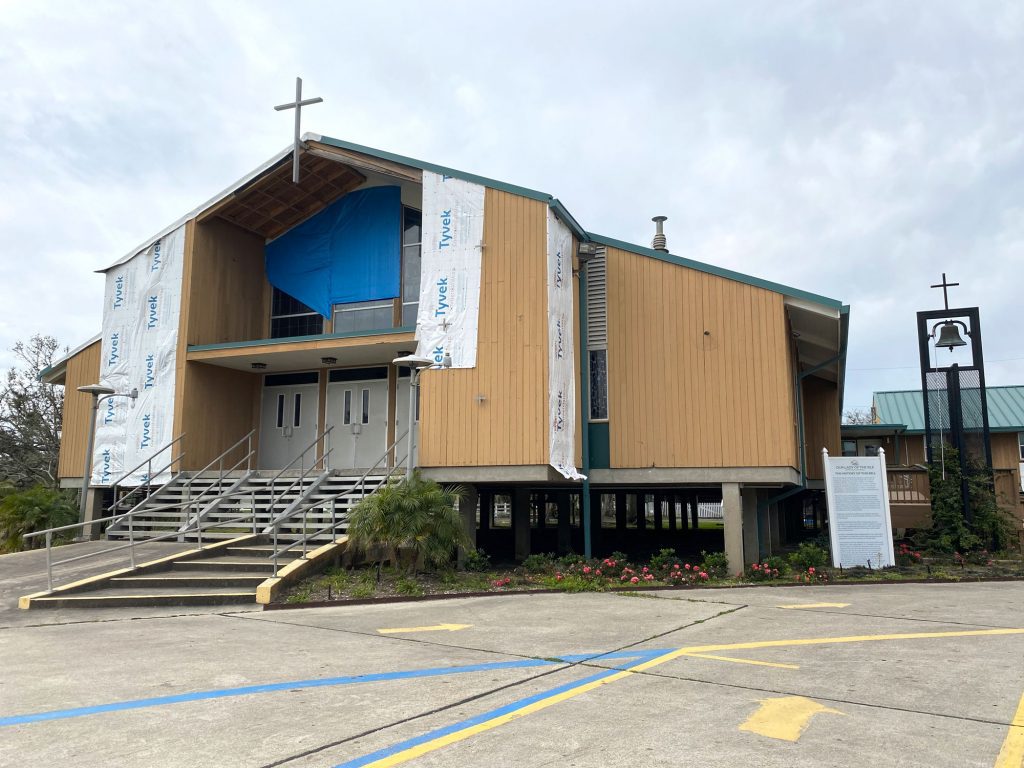
By Paul Gagneaux, staff writer Grand Isle residents say it is faith in the Lord despite continued challenges that keeps Our Lady of the Isle’s church community strong. However, Hurricane Ida left many members indefinitely displaced, leaving a lasting impact on this community of faith. “It’s sad to say that there are people who can’t and probably never will come back,” says Carroll Allemand, a parishioner at Our Lady of the Isle. “It’s sad to say that there are people who can’t and probably never will come back.” — Carroll Allemand, parishioner While the Catholic community of Grand Isle remains lively, Allemand says the number of people attending masses is much lower than it was before the hurricane. However, Ida is not solely to blame. Grand Isle’s faith community has overcome incredible challenges in its 109 years from the COVID-19 pandemic to Hurricane Ida’s devastation. The church was built in 1913 after the previous chapel was destroyed by the Great Storm of 1893. Though the Kate Chopin historical site names the Great Storm one of the worst recorded hurricanes in Louisiana’s history, Hurricane Ida was more effective at wounding a community still hurting from a pandemic. “People can’t rebuild because they can’t afford it,” says island resident Helen Tabor. “Their insurance does not provide enough for them.” Another island local, Liz Watkin, says the coronavirus pandemic diminished the community’s numbers even before Hurricane Ida did. “It’s dwindled a lot since Covid-19,” she says. “A lot of people couldn’t go, and a lot of people haven’t come back since. I think they got out of the habit of going to church.” Kristie L. Domangue, one of the church’s office workers, says Our Lady of the Isle has lost about 20 members of its congregation due to Ida. Though attendance has decreased since the storm, many still faithfully attend Mass. As the church’s repairs progress, Masses continue to take place at their regularly scheduled times. Our Lady of the Isle’s current priest, Fr. Mark Toups was assigned to the church in July of 2020. After taking some time away, he returned to Grand Isle shortly after Hurricane Ida. Members of the church say they love Fr. Mark and speak nothing but praises of him. “I think if we could get people back here, and he stays, we could bring people back – Father Mark definitely brings people,” Watkins says. The parishioners, clergy members and employees of Our Lady of the Isle Catholic Church say they have faith that their community is still strong despite a loss of members, and they believe their faith is more than enough to make up for what has been lost – both in Grand Isle and within the church community.
An Island Education
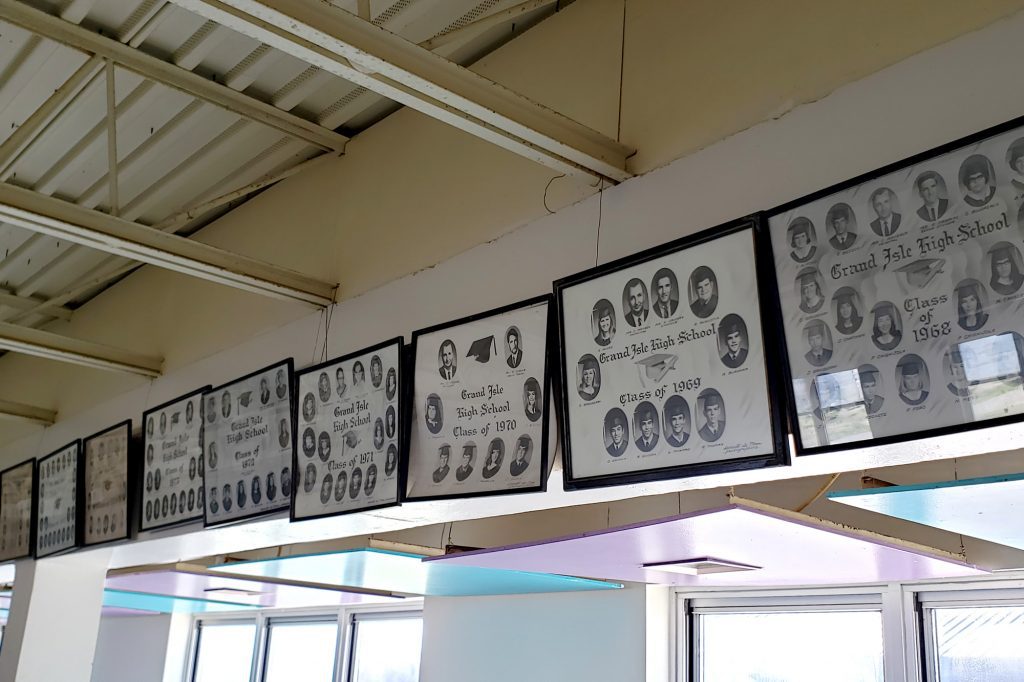
By JOnathan Eastwood, features editor As the island’s only school, Grand Isle School serves not only to educate its students, but also as an example of the community’s deep-rooted culture and traditions. “Grand Isle School is so much [a] part of the community that it’s almost seamless,” says Principal Christine Templet. “Grand Isle School is so much [a] part of the community that it’s almost seamless.” — Principal Christine Templet Grand Isle School’s staff returned to work on March 15, and students returned for classes on March 17 for the first time since Hurricane Ida hit August 29, 2021. The school has been operating virtually since October 1. Students say they are excited to return to the routine and social aspects of face-to-face education, and many say they prefer in-person classes to virtual learning. “It’s easier for me to watch and follow along [in person] than going onto a different screen and going back and forth,” says senior Emma English. Emma English prefers being at school not only for a better learning experience but also for the interactions she has with her classmates. Since Grand Isle School is fairly small – 40-50 students – the students are all friendly with one another. “I’m not scared to go up and ask someone – one of my classmates – for help, or just to talk to someone,” she says. Much like the close relationship among students, Grand Isle residents have a culture of strong bonds to their land and fellow inhabitants. Julie English, a social studies and English-language arts teacher, says students whose families lost their homes in the storm are set on returning to the island as soon as possible. “I believe that they will come back when there’s an island to come back to,” Julie English says. Grand Isle School’s sports program, specifically basketball, is yet another aspect that connects the school’s culture to the island’s. Many of the island’s residents frequent basketball games, which have become a staple of Grand Isle culture. However, due to Hurricane Ida, basketball was discontinued for the remainder of the school year, allowing students to focus more on their studies. “I’m sure basketball season was sorely missed,” Julie English says. The school opened in the early 1940s, and had its first graduating class in 1947. Photos of each year’s graduates line the cafeteria walls. The school teaches all grade levels, from Pre-K through 12 grade. Certain graduates have such a strong connection to the school that they returned to work there as adults. Templet counted six current staff members who are former Grand Isle School students. Templet has been principal for the past four years. She says she found it easy to take over the role because of the staff’s enthusiastic adherence to tradition, as well as their willingness to learn. “They had a lot of traditions – a lot of excellent routines – that we adopted,” Templet says. “The teachers are eager to learn and eager to try new things to improve their practice.” The culture of unity and perseverance that permeates the school and the entire island prepares the residents to stand together, regardless of the circumstances, she says. “They’re very resilient – the entire community is resilient.”
Island Weddings
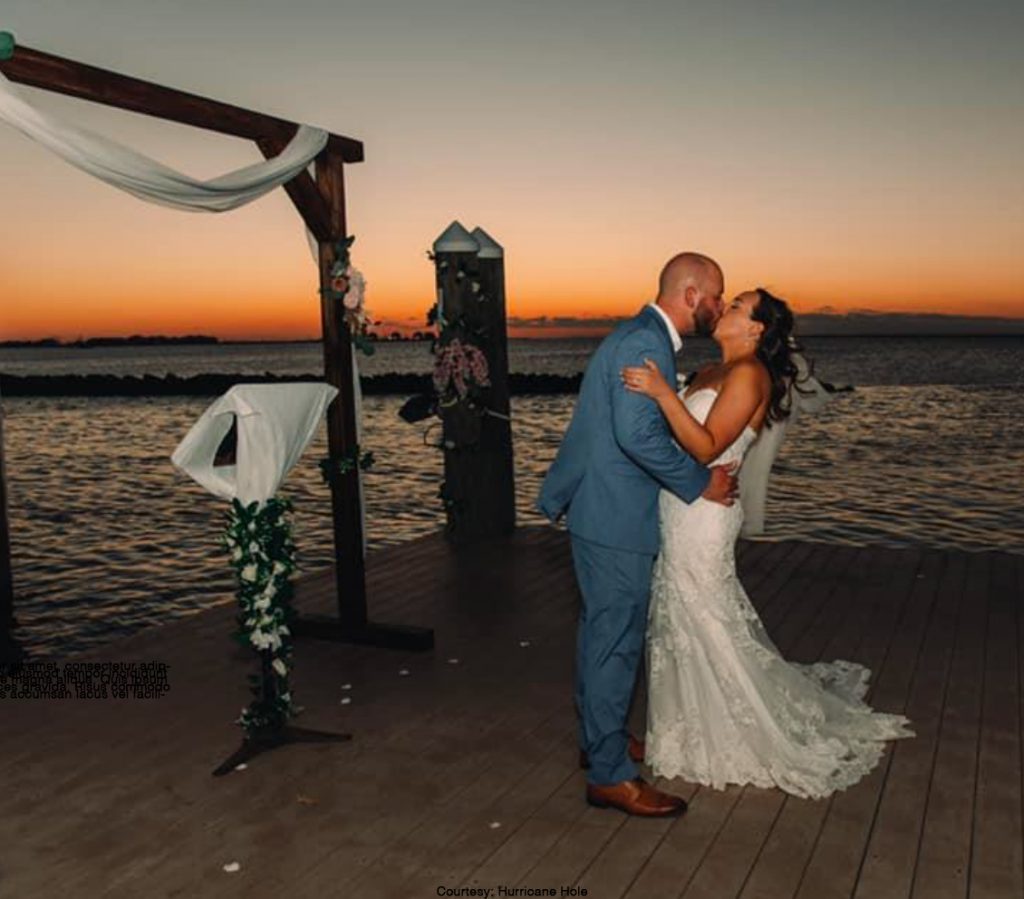
By VIctoria Savoy, photo editor Beaches have always been a popular destination for weddings, and Grand Isle’s beaches are no different. Many couples choose to have their weddings in Grand Isle because of their deep-rooted connections to the island. “The actual wedding was like out of a book,” Trahan says. “The sun was perfect, the clouds just right – it was a perfect day.” In addition to the beach, community center, and church, the Hurricane Hole is one of the many wedding venues on the island. “We are meant to do weddings on the island,” says Lan Tivet, Hurricane Hole Operations Coordinator and longtime Grand Isle resident. Tivet believes people are drawn to Grand Isle for weddings because of their strong emotional connections to the island. “You can go to Florida, you can go to all these other places, but when you have a connection to this place, it truly means something,” Tivet says. “I can’t wait for the island to be all cleaned up and rebuilt. Weddings on Grand Isle’s beach will continue to give happy couples a beautiful backdrop that they will always hold dear to their hearts.” — Donna Price Around three to five weddings per year are held on the island, but due to hurricanes – most recently Hurricane Ida – the number of weddings on the island has decreased. “We had a wedding scheduled for October of last year, and the storm hit, and they canceled it – they completely canceled it because of the storm,” Tivet says. Samantha White Trahan, who got married on the island, shared that she was devastated after seeing the damage Ida caused. She chose to have her wedding on Grand Isle because of her emotional attachment to the island. “We both grew up in Chauvin, Louisiana, and visited Grand Isle as kids,” Trahan says. “We have even brought our kids numerous times. Our kids love the beach, and so do we.” She says she is saddened by the fact that her kids will not be able to see her wedding spot the way she had. Donna Price from Unique Wedding Designs is a longtime wedding decorator who says that for her, Grand Isle is a piece of paradise. She says she has always wanted to be a part of beach weddings and has decorated two Grand Isle weddings so far. “Both are my favorite and will always be dear to my heart,” Price says. As for the future of weddings in Grand Isle, Price says she thinks it is bright. “I can’t wait for the island to be all cleaned up and rebuilt,” Price says. “It will be better than before.” “Weddings on Grand Isle’s beach will continue to give happy couples a beautiful backdrop that they will always hold dear to their hearts.”
Island Visitors
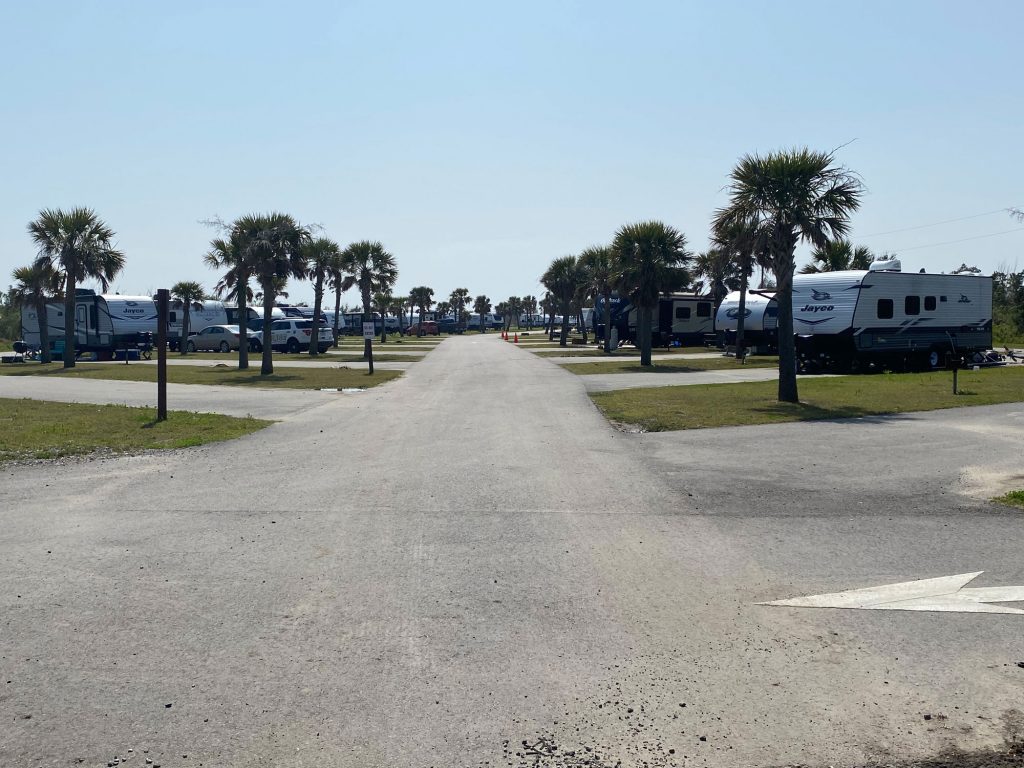
By Alexis Casnave, staff writer Grand Isle has been a vacationer’s choice for years. While the island is still recovering after Hurricane Ida, the local businesses are eager for vacationers to return. “We have a lot of people calling and they’re wanting to come back,” says Louise Lafont, head of Grand Isle’s tourist center. Though Lafont says she is eager for tourists to return, she wants them to be aware of the Grand Isle they will be returning to. Debris still lines the sides of the roads, and homes are still missing roofs. Since the storm, Grand Isle State park has housed residents living in state-issued trailers, so it is currently closed to the public. However, visitors can still access the island’s main attraction: Grand Isle Beach, where people can swim, fish and relax. Beginning in May, the island will resume hosting its annual events, such as the Tarpon Rodeo – one of Grand Isle’s biggest tourist attractions, attracting more than 20,000 people a year. For this year’s rodeo July 28 through July 30, Lafont says she will be happy to have even 10,000 people attend. “People are upset all over Louisiana that we all got beat up for Ida, so they’re all ready to do something fun,” says Lafont. “It just brings so many people in.” Rental houses on the island are slowly making their way back into business and preparing for future reservations. Pat Landry, owner of Landry’s House Bed and Breakfast, says his business is gradually returning to normal. “Business is coming up, and we’ve got people ready to come back,” Landry says. “Tourists are interested in coming back for this summer, and I’ve got about 10 to 12 reservations so far.” A few of Landry’s reservations are for visitors attending the Migratory Bird festival. The festival, which usually lasts two to three days, will only last one day this year on Saturday, April 23. The Starfish, a restaurant known for its shrimp po-boys and seafood platters, reopened in January after closing its doors for several months post-Ida. “Our kitchen is slowly getting back to normal but we’re still unable to do breakfast, which is something a lot of people like to come for,” says restaurant manager Michele Theriot. Though Grand Isle is far from back to normal, the community has not stopped welcoming tourists back to the island, Lafont says. “We want to be here, we love this place, and it helps when the tourists invest here because they love it also.” “We want to be here, we love this place, and it helps when the tourists invest here because they love it also.” — Louise Lafont
